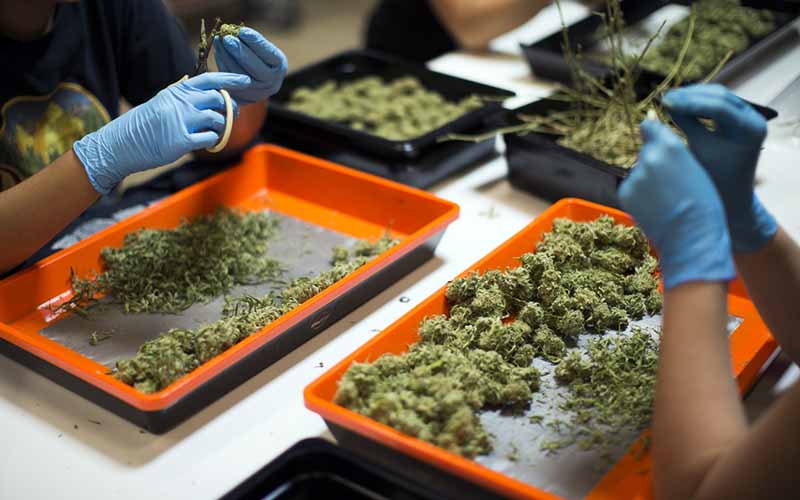Despite high promises in the lead-up to legalization, few growers have been able to profit from the green rush. Repeatedly missed sales forecasts have seen share prices crumble, with leadership teams chopped and changed in vain attempts to steady sinking ships. Following significant restructuring and cost cutting, there is renewed optimism that companies may make money in 2022. Much of this reorganization focussed on consolidation and pulling out of fledging regions such as Africa and South America.
However, investors are pumping capital into producers in emerging markets in a hope that they might be profitable quicker, that they might learn from the mistakes of their predecessors and be able to carve a commercially viable niche. To do so they need to be able engage and resonate with consumers, scaling operations sustainably to avoid accumulating hoards of unsold inventory.
A major challenge has been reducing production costs enough to offset taxation and contend with unlicensed competition, or educating consumers sufficiently to justify higher prices in the regulated market. For existing producers this entails identifying business operations to identify where savings can be made, for new entrants it means streamlining processes from the outset to minimize expenditure.
CUTTING COSTS
For the vast majority the most resource intensive, and therefore expensive, task in cannabis production is harvesting. Cannabis needs to be meticulously manicured to enhance flavour, smoothness and strength, with connoisseurs seeking the tightest trim possible. This removes all sugar leaves, which have fewer cannabinoids, terpenes, to improve the potency of the final product.
A crucial stage in creating premium cannabis, trimming often involves a substantial workforce and consequently high labour costs. A professional trimming crew can charge $200 per lb of flower, with a 175lb harvest costing $30,000 and taking 25 dedicated employees seven days to complete. This is not only extortionately expensive, but painstakingly slow. In comparison, elite trimming technologies can process 175lbs of flower in under five hours, for a substantially smaller one-off investment.
In addition to being infinitely faster than manual trimmers, automated cannabis harvesting solutions provide far greater uniformity at scale. This is essential when striving to deliver the exceptionally tight trim valued by the cognoscente consumer. As the quality of hand-trimmed flower can vary greatly from employee to employee, it requires far greater quality control measures with a percentage needing to be redone. This extends the time it takes to properly trim cannabis flower, which further increases production costs.
ACCURACY AND AUTOMATION
However, not all cannabis harvesting solutions are created equal. Flower may still need to be re-trimmed if the technology lacks innovations to incrementally adjust the closeness of the cut, or premium components that ensure continuous precision. The accuracy of automated solutions dictates its cost-efficiency, with the first cut the cheapest and repeating the process representing wasted expenditure.
Elite trimming technologies enable the operator to manage the suction of the machine, to adjust the flow of cannabis through the machine on a crop-by-crop basis. The greater the pull from the leaf collector, the greater the amount of sugar leaf clipped and the tighter the trim. As the risk of damaging flower rises exponentially alongside the tightness of the trim, growers need divertors that can be incrementally tightened until they are happy with trim and then apply that refined cut to the entire harvest.
To preserve trim precision for an extended period, the best solutions benefit from top-quality components, with the calibre of the cutting reel particularly important. Budget machines constitute a false economy as cheap blades dull over time and need to be replaced, rendering the trimmer ineffective. Although premium parts, such as Toro cutting reels, increase the cost of trimming solutions, they also ensure a quality cut from the first flower to the last.
INVESTING IN INNOVATION
In the latest technological breakthrough, the efficiency of industry-leading innovations can now be enhanced by connecting them together. This allows multiple machines to be controlled by a single user, to further streamline the process. When connected, the combined harvesting solutions feature multiple diverters which provides growers even greater control over air flow and trim length. By attaching the machines end-to-end, it also extends the time flowers spend in tumblers, exposing them to more cuts for a more comprehensive trim.
However, even investing in superior harvesting solutions does not guarantee the perfect trim every time, as flower density fluctuates and impacts movement through the machine. As a result, growers need to remain diligent and be able to modify trim length on the fly, with the ability to inspect the quality of finished flower as it leaves the trimmer. To facilitate this, trimming technologies often integrate with output conveyors to provide growers the opportunity for quality control. This is advantageous as the existing trim provides the operator with the information needed to perfect the cut.


